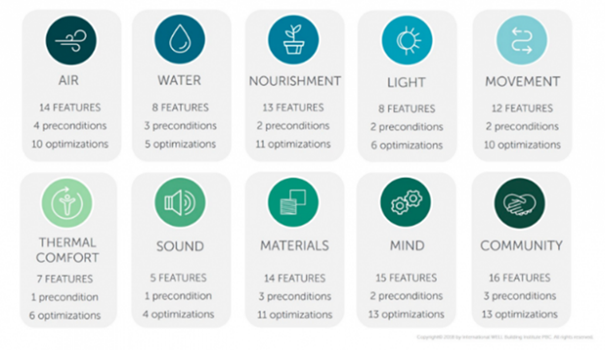What Are The Architectural Considerations For Designing Energy-efficient Residential Buildings?

Designing a sustainable home is not just about reducing your carbon footprint but also ensuring that your living space is comfortable and aesthetically pleasing. Here are some top architectural considerations that you need to keep in mind when designing your sustainable home:
1. Passive Solar Design
Passive Solar Design is all about utilizing natural resources to improve the comfort level and energy efficiency of your home. A well-designed passive solar house relies on the sun to maintain a comfortable indoor temperature while reducing energy consumption. The design includes proper orientation of the house to take advantage of the sun's path, building materials that absorb and store solar energy and strategically placed windows for natural ventilation.
2. Building Envelope
The building envelope plays a critical role in the energy efficiency of your home. Your home's envelope comprises of its walls, roof, windows, and foundation, which separates the indoor and outdoor environment. To optimize your home's energy efficiency, consider using high-quality insulation, air-tight construction, and energy-efficient windows that reduce heat loss and regulate the temperatures in your home.
3. Hybrid Heating, Ventilation and Air Conditioning (HVAC) Systems
Hybrid HVAC systems are becoming popular in designing sustainable homes. These systems utilize a combination of renewable energy and traditional energy sources to regulate the temperature in your home. The system is designed to work with passive solar design principles and utilize natural ventilation, heat recovery, and efficient air filtration systems to maintain a comfortable environment in your home while reducing your energy consumption.
4. Water Conservation and Management
Water use, conservation, and management issues are critical in sustainable home design. Architects are incorporating various measures to conserve water, such as installing rainwater harvesting systems, greywater systems, and low-flow fixtures. Furthermore, sustainable landscape design is becoming increasingly popular in managing water resources. Homeowners are encouraged to utilize drought-tolerant plants, permeable surfaces, and rain gardens for landscaping purposes.
5. Efficient Lighting Systems
Lighting is a vital component of your home's energy consumption. An efficient lighting system incorporates natural light, efficient light fixtures, and motion sensors. Utilizing natural light has proven to be an effective way of reducing energy use in homes, as it reduces your need for artificial lighting. Motion sensors are a great addition to your lighting system, as they switch off the lights when no one is present in the room.
6. Use of Sustainable and Recyclable Materials
Building materials should be sustainable, recyclable, and locally sourced to minimize your carbon footprint. The use of sustainable materials like bamboo, cork, and recycled wood reduces the environmental impact of your home, while providing a unique aesthetic appeal. Additionally, the use of recyclable materials, such as steel, glass, and concrete, in your home's construction is both eco-friendly and durable.
7. Indoor Air Quality and Ventilation
The quality of air you breathe in your home is essential to your overall health and well-being. Sustainable homes utilize appropriate ventilation systems and air filtration systems that ensure indoor air quality is top-notch, while reducing air pollutants. Architects are also designing homes with non-toxic materials to minimize off-gassing and improve indoor air quality.
8. Renewable Energy Sources
Renewable energy sources, like solar and wind, have become mainstream energy sources in sustainable home design. Installing solar panels or a wind turbine on your property can help you reduce your dependence on traditional energy sources, and even save you money in the long run. Additionally, incorporating storage batteries into your design allows you to store excess energy produced by your renewable energy source, which you can use when needed.
FAQs
What is sustainable home design?
Sustainable home design is an approach to designing homes that reduces the environmental impact of the building while providing a comfortable living space. The design emphasizes the use of renewable resources, reducing energy consumption and the use of eco-friendly materials in construction.
Why is sustainable home design important?
Sustainable home design is critical in mitigating climate change and protecting our natural resources. By reducing energy consumption and using renewable energy sources, sustainable homes reduce the carbon footprint of the building, and therefore reduces the greenhouse gas emissions. It also provides long-term cost savings for homeowners by reducing energy bills.
What are some benefits of designing a sustainable home?
The benefits of designing a sustainable home include lower energy bills, improved indoor air quality, reduced environmental impact, and greater comfort. These benefits are achieved through the use of renewable energy sources, efficient HVAC systems, effective water conservation, and proper ventilation systems, among others.
How can I incorporate sustainable design into my current home?
You can incorporate sustainable design into your current home by utilizing simple measures like installing energy-efficient lighting systems, reducing water use through low-flow devices, and improving indoor air quality by using non-toxic materials. However, if you wish to make significant changes, consider retrofitting your home with renewable energy sources like solar and water harvesting systems.
Can I still have a beautiful home while incorporating sustainable design?
Sustainable homes can be aesthetically pleasing and just as beautiful as traditional homes. Sustainable home design takes into account both functionality and aesthetics, resulting in a unique living space. Incorporating elements like sustainable materials, natural light, and beautiful landscaping into your design can result in a beautiful, eco-friendly home.
How can I ensure that my sustainable home is truly sustainable?
To ensure that your sustainable home is truly sustainable, ensure that the design meets the standards set by sustainable building certifications like LEED, Passivhaus, and Living Building Challenge. These standards provide a comprehensive approach to sustainable home design and construction, based on the principles of energy efficiency, water conservation, and use of eco-friendly materials.
By considering these architectural factors, you can design a comfortable, eco-friendly, and sustainable home that makes a positive impact on the environment.




Post a Comment for "What Are The Architectural Considerations For Designing Energy-efficient Residential Buildings?"